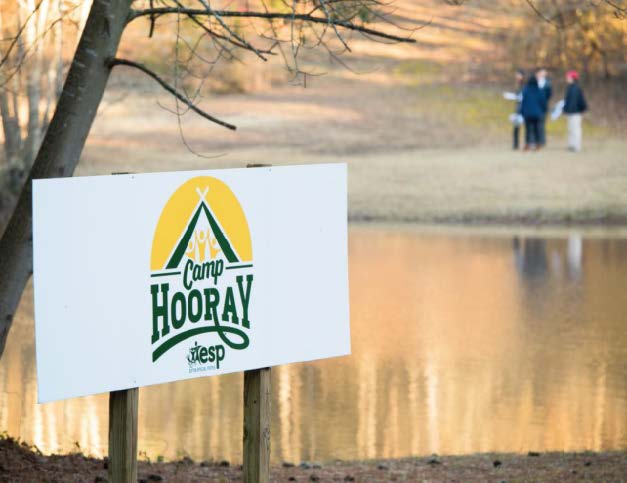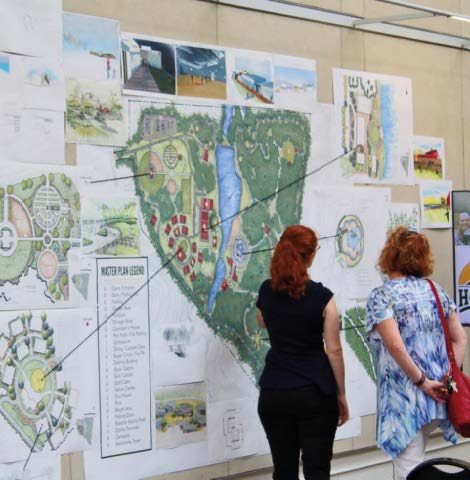envisioned a place where children and young people with special needs could focus on their abilities rather than their disabilities in the form of a high-quality yet affordable summer camp. That vision birthed Extra Special People (ESP), an organization that now serves more than 300 families every summer and throughout the year with after-school and family support programs. No child with a disability is turned away from ESP, and the organization welcomes children with cerebral palsy, Down syndrome, autism, fetal alcohol syndrome, Angelman syndrome, spina bifida and many more. ESP’s foundational summer camp program is open to kids of all ages and all abilities. Serving more than 250 people each summer, the camp provides continuous learning as well as social and recreational opportunities, with classic camp activities like rock climbing, boating, archery, swimming, crafts and much more. Staying true to one of its original principles, affordability,
ESP never asks a family to provide more than 25 percent of the cost of any activity.
Since ESP’s inception, campers have been challenging and pushing themselves to succeed physically and socially at a summer camp with programming designed specifically for them. Counselors form close relationships with the participants, catering to individual needs and abilities. At ESP, the activities aren’t focused on doing better than those around you. Rather than hitting the ball harder, swimming father or climbing higher than your peers, ESP encourages campers to hit harder, swim farther and climb higher than his or her own personal best.
Over the last 30 years, the presence of ESP Even in more advanced special needs-focused camps, firepits weren’t built to allow campers on wheels or with walking instruments to roast their own marshmallows. Simply stated, there is not a single camp facility in the country that is completely accessible. “We realized we had the opportunity to make the camp experience as authentic for our kids with special needs as it is for any kid in America.” in northeast Georgia has transformed the entire community’s relationship with individuals with special needs. Volunteers from the community and nearby University of Georgia students facilitate after-school and summer programs, building strong and long lasting bonds with ESP participants and families. Melissa Salmon, Oregon native and mother of ESP camper Blue bragged of how her son has found a home at ESP since they relocated to Georgia.
“I was sheltering my child because a fear of being rejected, and now he knows more people than I do,” Salmon said. “I’ll never move.”
Although ESP provides unparalleled opportunities for young people with special needs, its summer camp cannot yet offer one classically integral camp experience: the ability to sleep on the top bunk. This heartbreaking realization sent ESP Executive Director Laura Whitaker on a tour of special needs camps around the country, where she found inspiration as well as vast room for improvement in the sphere of accessible summer camps. Along with inaccessibility to the prized top bunk, Whitaker found that kids in wheelchairs often entered campground buildings through separate entrances.
“We realized we had the opportunity to make the camp experience as authentic for our kids with special needs as it is for any kid in America.”
Even in more advanced special needs-focused camps, firepits weren’t built to allow campers on wheels or with walking instruments to roast their own marshmallows. Simply stated, there is not a single camp facility in the country that is completely accessible. The idea of Camp Hooray was born to change that. “We realized we had the opportunity to build the first-ever, fully accessible camp from the ground up,” said Carter Strickland, Chairman of ESP’s Board of Directors. “We could make the camp experience as authentic for our kids with special needs as it is for any kid in America.” In the summer of 2014, ESP was introduced to 70 acres of beautiful, empty land in northeast Georgia that it never intended to purchase. Following a chain of somewhat fateful events, ESP’s hesitancy turned into excitement at what the space had the potential to become - a fully accessible overnight camp. Whitaker and ESP began to envision a place that they didn’t have to rent for summer camp; a place molded and built


WIDE OPEN SPACES: (Above, left to right) Camp Hooray property boasts 70 acres of land in northeast Georgia; Students involved in the charrette project review the final plans for Camp Hooray. Teachers and students worked alongside ESP participants to gain their insight into architectural plans.